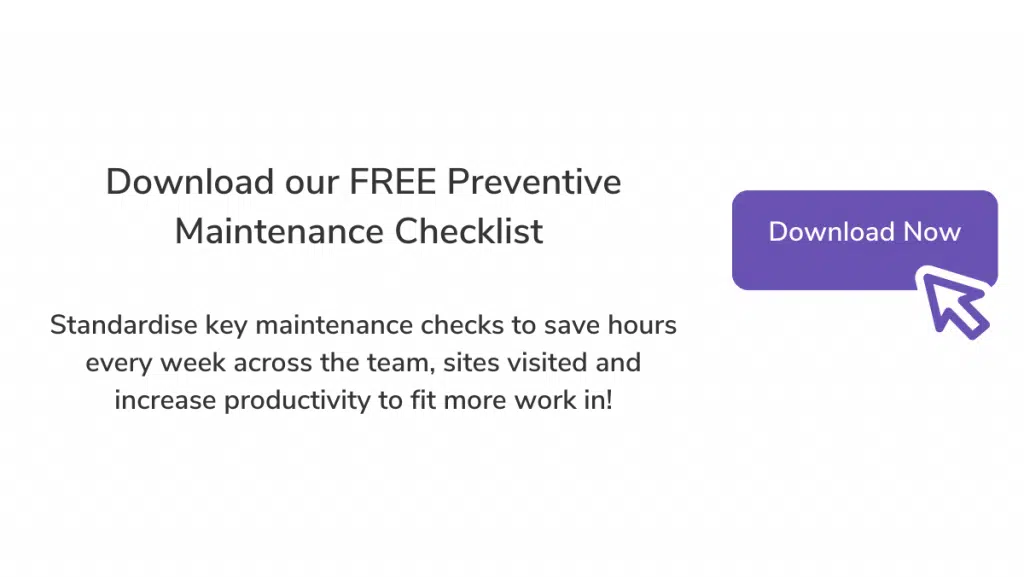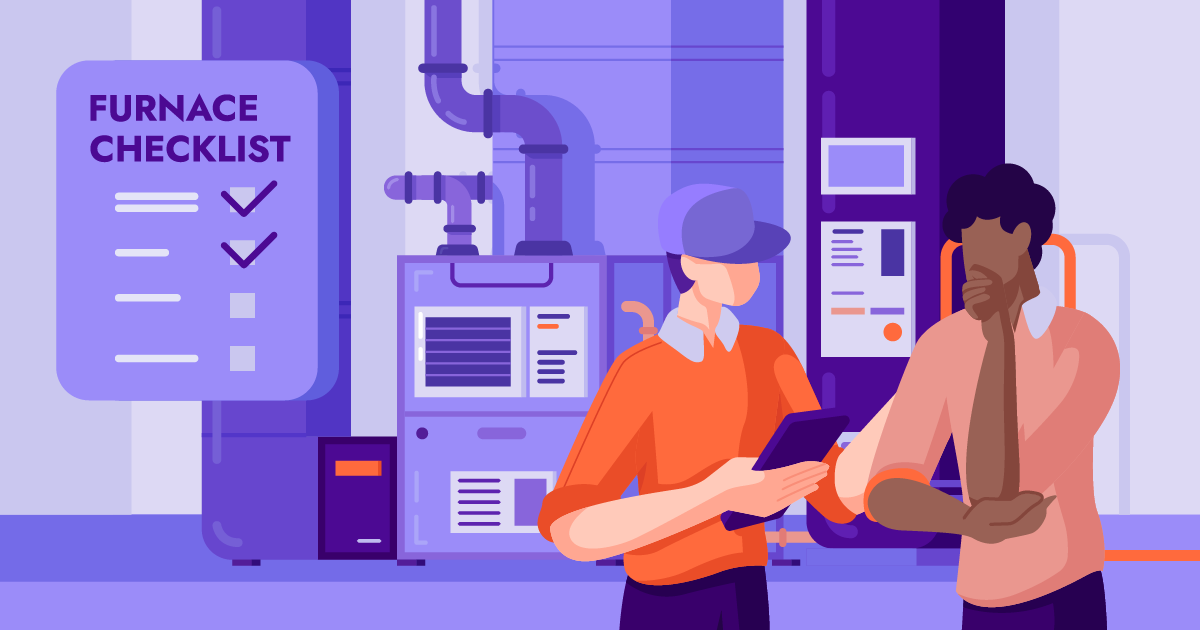Preventive Maintenance Checklist For Hydraulic Systems (2021 Updated)
Preventive Maintenance Checklist For Hydraulic Systems
Does your team struggle with hydraulic maintenance? With the perfect preventive maintenance checklist under your belt, your team will be able to smoothly and consistently check off their PM services.
With great preventive maintenance software for your hydraulic systems (both residential and commercial) you can create more accountability in your team and eliminate stress. When you have the perfect system in place, your software and checklists will do the heavy lifting for you – much like your hydraulic system.
In this blog, we will go through the steps your HVAC business needs to take to create your perfect hydraulic checklist with the benefits of a PM software.
Questions You Need To Ask Before Starting
When building your preventive maintenance checklist, you first need to ask a few questions to clarify what needs to be done.
Avoiding system failure and improving your asset performance may seem like simple goals, but to reach them, you need to dissect your maintenance plan.
Begin with what type of maintenance is needed?
- Breakdown Maintenance: this type of maintenance plan is focused on waiting for a part to be broken before taking any maintenance steps. This can also be called ‘reactive’ maintenance.
- Preventive Maintenance: this style of maintenance is one of the most common and cost effective plans that HVAC businesses use. This is all about regular scheduled maintenance to avoid breakdown and unplanned equipment downtime.
- Predictive maintenance: This is usually a more costly maintenance plan and requires sensors or data collection devices to relay information about the asset’s performance.
To understand what type of maintenance best suits your business, ask yourself some simple questions.
- What are the environmental conditions that will need to be considered? i.e. extreme heat, snow, ice, debris.
- What are the manufacturer or warranty requirements?
- How often does maintenance need to be scheduled?
- What are the requirements on part replacements?
- Is the system being overloaded?
- Is the system working at the correct flow?
- Is the pressure within desired range?
- What does the system workload look like on average?
15 Tasks You Should Include In Your Preventive Maintenance Checklist
Once you have determined what type of maintenance your hydraulic system requires, you can begin to create your ultimate checklist. It’s important to note that your warranty or manufacturer requirements may alter your checklist based on your contracts or agreements.
Here are the top tasks that should be included in your hydraulic system checklist to reach your business KPIs and goals:
1: Hydraulic fluid
- Check fluid levels are within desired range
- Add a top up of fluid if needed
- Remember not to mix fluids
- Check the colour of the fluid, looking for signs of contamination or debris
2: Hydraulic Oil
- Check for signs of contamination
- Ensure openings and dipsticks are clean
- Remove any debris from around the openings or area
3: Filters
- Clean the filter bowl
- Replace filter as described in your warranty/manufacturer agreements
4: Seals
- Check for seal damage
- Check for seal leakages
- Replace if necessary
Leaking or damaged seals can be a sign of rod corrosion and be a result of excess friction, ensuring that your seals are in good health can help you catch defects within your asset.
5: System Temperature
- Check your asset’s temperature is within desired range
- Check the thermometer (either built-in or spot infrared)
- Wear correct PPE (Personal Protective Equipment) to reduce risk of burns
- Check proportional valves and servo valves for high temperatures (if it is overheating, the valve may be sticking).
Having a low temperature in your hydraulic system can be a sign of low fluid levels or issues with the relief valve.
6: Hydraulic Reservoir
- Check inside for signs of possible aeration, signs of leaks or any foaming
7: Leaks and frays
- Inspect all your components for signs of leaks or frays that can contribute to larger problems. (Leaking in your system can result in overheating due to low fluid levels and can be hazardous).
- Hoses
- Tubes
- Fittings
8: Electric Drive Motor
- Use thermometer to test for high temperatures
- Any hot spots can help in identifying housing or bearings that need attention
9: Unusual Sounds
- Listen for any unusual sounds, vibrations or rattles.
Any sounds that are unusual can result from cavitation and cause damage if not reconciled. This will create excessive wear and tear to your asset if not caught in your maintenance service.
10: Visual Inspection
- Check for signs of overheating, aeration, air bubbles, foam, debris build up, and wear and tear on your asset.
- Inspect the outside of the asset and clean any debris or build up away.
11: Rods
- Check for wear and tear on rods (and any signs of corrosion, leaks or pitting)
- This can lead to increased wear and tear and incorrect lubrication levels if not reconciled
12: Hydraulic Lines
- Check for line thickness or any pressure fluctuations
- Ballooning can be a result of high pressure from the cylinder and will create undue wear and tear.
13: Breather Caps, Screens and Breather Filters
- Check for contamination on breathers
- Clean breathers to avoid damage such as tears or holes
- Replace fill screens and caps as needed
14: Indicators
- Inspect filter indicator for blockages or debris that will create clogs in the system
15: Pipes and Connections
- Inspect system hoses and pipe connections for ballooning, kinks, wear or damage.
- Both internal and external issues can be a problem here
- Inspect fittings and couplers for indentation or rust on pipes
- Check fittings aren’t too loose or too tight
- Ensure there is no spilled oil or fluid on ground or leaking from the asset – clean if applicable
For the best chance in reducing your equipment downtime, ensure to include the top 30 PM best practices in your workflow.
The Importance Of Hydraulic Systems Preventive Maintenance
It is important to have a good preventative maintenance system in place to keep your customers and their assets happy. Without a preventive maintenance plan, you will find you receive more emergency phone calls from your customers that will interrupt your schedule. With field service automation as a part of your preventive plan, you gain more control over your work order management and your schedule.
Your customer’s hydraulic systems will also benefit from a great preventive maintenance program. Results show that with a great PM plan, hydraulic systems will:
- Reduce the chance of overheating: with more maintenance and fluid checks, you can ensure the system isn’t running low and causing more wear and tear. If you have temperatures too low in your system, you will have excess condensation and cavitation. Alternatively if temperatures run too high, you will have oxidation. With regular maintenance you can eliminate these issues from occurring and ensure the system is running within the desired temperature.
- Avoid fluid contamination: with regular tests it is easy to spot signs of corrosion or debris that can lead to fluid contamination.
- Keep it clean: maintenance will help keep your internal and external components clean with regular cleaning and inspections.
- Extend asset life span: with more consistent and regular maintenance, you will be able to extend your system lifecycle.
- Cut extreme repair costs: when you have a regular maintenance plan you can catch issues before they evolve to expensive defects.
For more great checklists, have a read of FieldInsight’s Electrical preventive maintenance checklist and Commercial refrigeration checklist.  FieldInsight And Your Hydraulic System
FieldInsight And Your Hydraulic System
To gain the most from your maintenance program, a job management software like FieldInsight will give you back the control you need in your HVAC business.
Book a demo today to find out how you can benefit from a job management software with FieldInsight.
What You Should Do Now
- Book a Demo. You’ll be in touch with an automation expert who has worked in this space for over 5 years, and knows the optimal workflow to address your needs.
- If you’d like access to free articles about managing HVAC workflows, go to our blog.
- If you know someone who’d enjoy reading this page, share it with them via email, Linkedin, Twitter, or Facebook.



